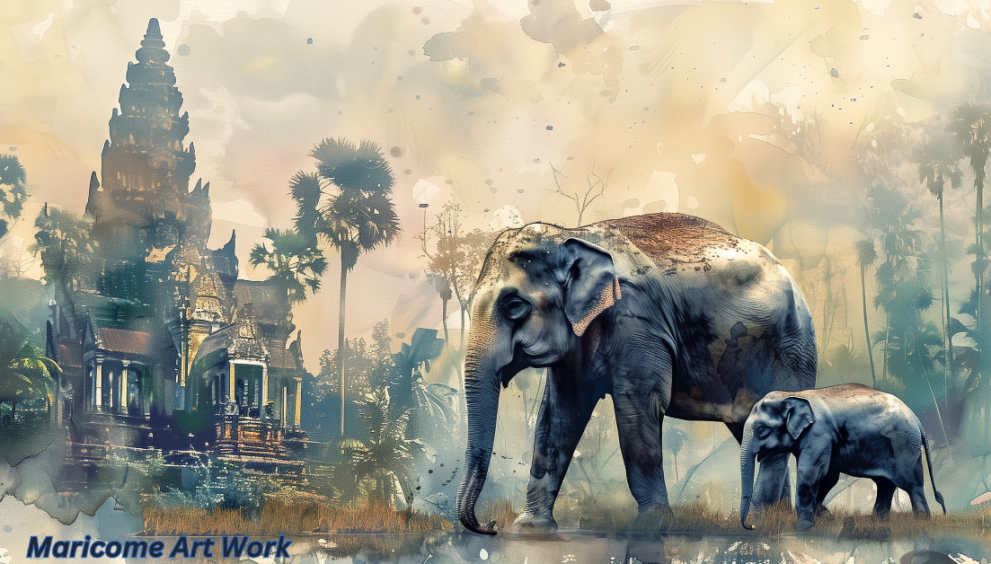Maricome Art work: A Journey Through Colors Emotions and Creativity

Art is more than just a visual medium; it is an expression of emotion, culture, and thought. Maricome Art work stands as a testament to this belief, blending vibrant colors, intricate designs, and profound symbolism to create an unforgettable artistic experience. Whether you’re a seasoned art lover or a curious beginner, Maricome art offers something for everyone. This article will take you on a journey through the origins, styles, techniques, and significance of Maricome art, helping you appreciate its unique beauty.
What is Maricome Art work?
Maricome art is a relatively new and evolving art form, known for its bold use of color and attention to emotional depth. It draws from a mixture of traditional and contemporary art techniques, often blending elements of abstract, surrealism, and figurative styles. The distinctive feature of Maricome art is its focus on emotional resonance, making each piece a narrative of human experience, whether it be joy, sorrow, peace, or conflict.
The themes of Maricome art often revolve around nature, the human condition, and societal issues, communicated through expressive brushstrokes, geometric patterns, and powerful symbolism.
Origins and Influences of Maricome Art
Maricome art, while a relatively modern movement, is deeply rooted in both traditional art forms and contemporary influences. Its origins can be traced to various artistic movements from the 20th century, including expressionism and abstract art, yet it has evolved into something uniquely its own.
Influences from Expressionism
Expressionism plays a crucial role in shaping Maricome art, particularly in its focus on conveying emotions through distorted forms and bold colors. Artists of the Maricome style often experiment with exaggerated shapes and surreal imagery to reflect inner turmoil or joy, similar to the way expressionists broke away from realism to capture the essence of human emotion.
Abstract Inspirations
Abstract art’s influence on Maricome can be seen in its use of shapes, lines, and colors to represent ideas and feelings rather than concrete subjects. Many Maricome pieces leave interpretation up to the viewer, allowing the individual to connect with the artwork on a personal level. The fluidity of form in these pieces lets the imagination roam freely, and each observer might see something different depending on their perspective and emotional state.
Techniques and Styles in Maricome Art work
The beauty of Maricome art lies not only in its message but also in the techniques used to create it. These techniques often emphasize texture, layering, and mixed media to achieve a sense of depth and complexity.
Bold Use of Color
One of the defining characteristics of Maricome art is its use of color. Bright, contrasting hues are employed to evoke specific emotions, whether it’s the calmness of a deep blue or the energy of a fiery red. Artists often use a vibrant color palette to capture the attention of the viewer and communicate the intensity of the message.
Textural Elements
Maricome artists frequently incorporate textural techniques into their work. Using thick layers of paint, textured fabrics, or mixed materials, they add a tactile quality to the canvas that invites viewers to engage with the piece beyond just the visual. The layering of textures mirrors the layering of emotions, with each stroke representing a new layer of feeling or meaning.
Mixed Media
Mixed media is a common tool in Maricome art, where artists combine traditional mediums like oil paints or watercolors with unconventional materials such as paper, fabric, or even found objects. This approach adds dimension to the artwork and further reflects the complex emotions and narratives being conveyed.
Symbolism and Metaphor
Symbolism is an essential aspect of Maricome art. Artists often employ visual metaphors to represent deeper meanings. A simple object in a painting might have a much broader significance, representing societal issues, personal struggles, or universal human experiences. Interpreting these symbols adds another layer of connection between the art and the viewer, encouraging deeper thought and reflection.
Themes Explored in Maricome Art work
At its core, Maricome art is about storytelling. Through its diverse themes, this art form explores the breadth of human experience, both on a personal and global level.
Nature and the Environment
Many Maricome pieces center around nature, portraying it as both beautiful and fragile. Artists use vibrant imagery of forests, oceans, animals, and celestial elements to explore humanity’s relationship with the natural world. These artworks often reflect themes of environmental conservation, urging viewers to consider the impact of human activity on the planet.
Human Emotions and Relationships
Emotions are central to Maricome art. The style uniquely captures the complexity of human feelings, portraying everything from the rawness of grief to the serenity of peace. Through abstract forms and bold colors, artists depict the emotional highs and lows that make up the human condition. Relationships between people are also a key theme, with many pieces exploring love, friendship, and connection in visually striking ways.
Social and Political Issues
Maricome art is often a response to the world around us, serving as a commentary on social and political issues. Some artists use their work as a form of protest, depicting themes of inequality, oppression, and social justice. The dynamic imagery and symbolic representations encourage viewers to think critically about the world and their role in it.
Famous Artists in the Maricome Movement
Although the Maricome art movement is still emerging, several artists have made significant contributions to its development and popularity. Each of these artists brings their unique style and voice to the medium, enriching the tapestry of Maricome art with their creativity and perspective.
Lucia Marquez
Lucia Marquez is known for her vibrant, nature-inspired pieces that often feature surreal landscapes and dreamlike imagery. Her use of bold colors and abstract shapes brings a sense of fantasy to her work, inviting viewers to see the world through a new lens.
Aiden Santiago
Aiden Santiago focuses on the human condition in his work, using Maricome art to depict raw, emotional scenes of struggle and triumph. His pieces are often introspective, exploring themes of identity, loss, and resilience, and are characterized by their use of texture and mixed media.
Elena Ramirez
Elena Ramirez has gained recognition for her politically charged artworks, using the Maricome style to address issues of social justice, inequality, and environmentalism. Her bold use of symbols and metaphors allows her to communicate powerful messages that resonate on both a personal and societal level.
The Impact of Maricome Art on Modern Culture
As Maricome art grows in popularity, its impact on modern culture becomes more pronounced. The movement has gained traction not only in galleries but also in digital spaces, where it reaches a global audience. The emotional depth and vibrant visual style of Maricome art make it appealing to a wide range of people, particularly those who seek out art that resonates on a personal level.
Social Media and Online Presence
Social media platforms like Instagram and Pinterest have played a significant role in bringing Maricome art to the forefront of contemporary art scenes. Artists can easily share their work with a broad audience, and the emotionally evocative nature of Maricome art lends itself to being shared and discussed online. This digital exposure has helped to solidify its place in modern culture.
Art Therapy
Another area where Maricome art has made a significant impact is in the field of art therapy. The emotionally expressive nature of the style allows individuals to connect with their feelings and explore their inner world. Therapists are increasingly using Maricome art as a tool for helping people process trauma, anxiety, and other emotional challenges.
How to Appreciate and Engage with Maricome Art
For those new to the world of Maricome art, there are many ways to start engaging with and appreciating this vibrant style. Whether you’re visiting a gallery, exploring works online, or even trying your hand at creating your own piece, here are some tips for connecting with Maricome art:
Visit Galleries and Exhibitions
Many contemporary art galleries are now featuring Maricome art, offering viewers the opportunity to experience these works in person. The texture, color, and depth of Maricome pieces are often best appreciated up close, so if you have the chance, visit a local gallery to immerse yourself in this art form.
Follow Maricome Art work Online
Social media platforms are a great way to stay updated on new works from Maricome artists. Following them online allows you to see their creative process, gain insights into their inspiration, and connect with the broader Maricome community.
Create Your Own Maricome Art
One of the best ways to understand Maricome art is to try it yourself. You don’t need to be a professional artist to engage with this style; simply grab some materials and start experimenting with colors, textures, and symbols that resonate with you. The process of creating Maricome art can be both therapeutic and enlightening, allowing you to express your emotions in a new and creative way.
Conclusion: The Ever-Evolving World of Maricome Art work
Maricome Art work is a celebration of emotion, color, and creativity. Its ability to evoke deep feelings, provoke thought, and inspire dialogue makes it a powerful form of artistic expression. As more artists embrace this style and experiment with its techniques, Maricome art will continue to grow, evolve, and captivate audiences worldwide.







